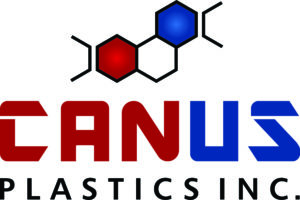Thermoforming Essentials for Plastic Product Excellence

Thermoforming is one of the key technologies we at Canus Plastics Inc. use to shape plastic materials into high-quality, functional products. This process involves heating plastic sheets until they are malleable, then forming them over a mold to achieve the desired shape. Once cooled, the plastic retains the shape of the mold, resulting in precise and durable products. Given its efficiency and versatility, thermoforming is crucial for producing components across various industries.
Our expertise extends to several thermoforming techniques, including vacuum forming, pressure forming, and twin-sheet forming. Each method offers unique advantages and is chosen based on the specific requirements of the product we are manufacturing. By leveraging these techniques, we ensure that every item meets our standards for quality, durability, and aesthetic appeal.
Thermoforming not only allows us to create complex shapes but also supports our commitment to innovation and sustainability. As we continue to explore and integrate advances in thermoforming technology, we enhance our capability to deliver even more specialized and environmentally friendly products. This introduction to thermoforming illustrates how we at Canus Plastics Inc. harness this technology to meet diverse customer needs and push the boundaries of plastic manufacturing.
What is Thermoforming and How Does It Work?
Thermoforming is a transformative process we use at Canus Plastics Inc. to craft high-quality plastic products. It begins by heating a plastic sheet until it’s pliable, then molding it into a specific shape using a mold. Once the desired form is achieved, the plastic is cooled to harden into the new shape. This method allows us to produce lightweight yet robust products efficiently.
The unique aspect of thermoforming lies in its variations: vacuum forming, pressure forming, and twin-sheet forming. Vacuum forming draws the heated plastic sheet against the mold solely by vacuum. In contrast, pressure forming uses additional pressure on the opposite side of the sheet, enhancing the definition and robustness of the product. Twin-sheet forming heat bonds two separate sheets of plastic, creating a hollow structure ideal for certain applications. Each method has specific benefits depending on the project requirements.
Advantages of Thermoforming in Plastic Manufacturing
At Canus Plastics Inc., we have identified several significant advantages of using thermoforming in our manufacturing processes. Firstly, this technique drastically reduces production times. Unlike other methods requiring longer cooling times or complex setups, thermoforming allows us to move swiftly from concept to completion. This efficiency is crucial for meeting client deadlines and delivering projects on schedule.
Furthermore, thermoforming offers unparalleled design flexibility and customization. We can quickly adapt our processes to meet specific client needs, whether it’s altering the thickness, texture, or adding intricate details to the products. This adaptability ensures that each piece we create precisely matches our clients’ specifications.
Lastly, the superior product quality achieved through thermoforming is evident in the precision of detail and finishes we can accomplish. These high-quality results are not just visually appealing but also long-lasting, providing our clients with products that are both beautiful and durable.
Applications of Thermoforming in Various Industries
Thermoforming has revolutionized the way we, at Canus Plastics Inc., address the diverse needs of different industries. For instance, in response to the global pandemic, we’ve efficiently produced numerous COVID-19 countermeasures, including protective barriers and face shield components that are lightweight yet durable. These items are crucial in providing essential protection to healthcare workers and the public.
Moreover, the robust nature of our thermoformed products makes them ideal for safety and security equipment. Whether it’s machine guards in industrial settings or impact-resistant covers, our methods ensure each product withstands rigorous use. Additionally, our capabilities extend to the retail sector, where thermoforming allows us to create eye-catching marketing displays and election boxes. These products are not only aesthetically pleasing but also customized to enhance functionality and audience engagement.
Future Trends and Innovations in Thermoforming
Looking ahead, we anticipate exciting advancements in thermoforming technology that will further enhance our service offerings at Canus Plastics Inc. The integration of automation and smarter manufacturing systems is poised to increase production efficiency and product consistency. These technological enhancements will enable us to meet precise specifications with even greater accuracy and speed.
Sustainability also plays a vital role in our future plans. We are continuously exploring the use of more sustainable materials and processes to reduce our environmental impact. For instance, we are implementing ways to use recycled plastics in our thermoforming processes, advancing towards a more sustainable manufacturing cycle that not only reduces waste but also conserves resources.
Conclusion
As we continue to innovate and adapt in the realm of thermoforming, our commitment at Canus Plastics Inc. to quality, precision, and efficiency remains unwavering. We are dedicated to leveraging the latest technologies and sustainable practices to meet the evolving needs of our clients and industries. By focusing on advancements and applications that push the boundaries of what is possible in plastic manufacturing, we ensure that our clients receive the best in class products tailored to their specific needs.
For more information or to discuss how our thermoforming solutions can benefit your business, reach out to us today. Explore the future of manufacturing with Canus Plastics Inc., where innovation meets excellence.

